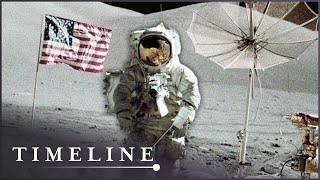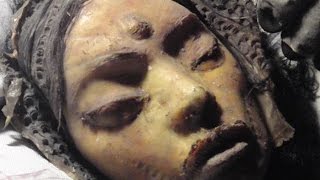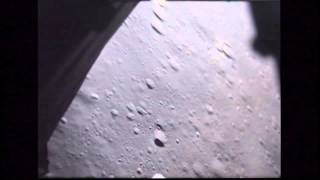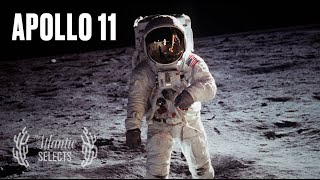Wednesday, 24 December, 2025г.
















Где искать: по сайтам Запорожской области, статьи, видео ролики
пример: покупка автомобиля в Запорожье
Apollo's Space Mission - Space Documentary 2019 [HD]
APOLLO'S DARING MISSION NOVA Documentary
The lunar landing site was the Taurus-Littrow highlands and valley area. This site was picked for Apollo 17 as a location where rocks both older and younger than those previously returned from other Apollo missions, as well as from Luna 16 and 20 missions, might be found.
The mission was the final in a series of three J-type missions planned for the Apollo Program. These J-type missions can be distinguished from previous G- and H-series missions by extended hardware capability, larger scientific payload capacity and by the use of the battery-powered Lunar Roving Vehicle, or LRV.
Scientific objectives of the Apollo 17 mission included, geological surveying and sampling of materials and surface features in a preselected area of the Taurus-Littrow region; deploying and activating surface experiments; and conducting in-flight experiments and photographic tasks during lunar orbit and transearth coast. These objectives included deployed experiments, such as the Apollo Lunar Surface Experiments Package, or ALSEP, with a heat flow experiment; lunar seismic profiling, or LSP; lunar surface gravimeter, or LSG; lunar atmospheric composition experiment, or LACE; and lunar ejecta and meteorites, or LEAM. The mission also included lunar sampling and lunar orbital experiments. Biomedical experiments included the Biostack II experiment and the BIOCORE experiment.
Mission Highlights
At 9:15:29 a.m. GMT Dec. 7, 1972, the command and service module, or CSM, was separated from the S-IVB. Approximately 15 min later, the CSM docked with the lunar module, or LM. After CSM/LM extraction from the S-IVB, the S-IVB was targeted for lunar impact, which occurred Dec. 10, at 8:32:43 p.m. The impact location was approximately 84 nautical miles northwest of the planned target point and the event was recorded by the passive seismic experiments deployed on the Apollos 12, 14, 15 and 16 missions.
Only one of the four planned midcourse corrections was required during translunar coast. A midcourse correction made at 5:03 p.m. Dec. 8, was a 1.6 second service propulsion system burn resulting in a 10 :5 feet second velocity change. Lunar orbit insertion was accomplished at 7:47:23 p.m. Dec. 10, placing the spacecraft into a lunar orbit of 170 by 52.6 nautical miles. Approximately four hours, 20 minutes later, the orbit was reduced to 59 by 15 nautical miles. The spacecraft remained in this low orbit for more than 18 hours, during which time the CSM LM undocking and separation were performed. The CSM circularization maneuver was performed at 6:50:29 p.m. Dec. 11, which placed the CSM into an orbit of 70.3 by 54.3 nautical miles. At 2:35 p.m. Dec. 11, the commander and lunar module pilot entered the LM to prepare for descent to the lunar surface. At 6:55:42 p.m. Dec. 11, the LM was placed into an orbit with a perilune altitude of 6.2 nautical miles. Approximately 47 minutes later, the powered descent to the lunar surface began. Landing occurred at 7:54:57 p.m. Dec. 11, at lunar latitude 20 degrees, 10 minutes north, and longitude 30 degrees 46 minutes east. Apollo 17 was the last lunar landing mission. Three extravehicular activities, or EVAs, lasted a total of 22 hours, four minutes on the lunar surface. EVA No. 1 began at 11:54:49 p.m. Dec. 11, with Eugene Cernan egressing at 12:01 a.m. Dec. 12. The first EVA was seven hours, 12 minutes long and was completed at 7:06:42 a.m. Dec. 12. The second EVA began at 11:28:06 p.m. Dec. 12, and lasted seven hours, 37 minutes, ending at at 7:05:02 a.m. Dec. 13. The final EVA began at 10:25:48 p.m. Dec. 13, and ended at 5:40:56 a.m. Dec. 14.
#apollo #space #documentary
Теги:
Advexon TV how to top 10 top facts top ten top 5 top video how to fact apollo mission to apollo apollo documentary space documentary 2019 space documentary 4k full documentary apollo's daring mission nova documentary pbs nova bbc documentary apollo film nasa doc advexon documentary documentary 2019 advexon documentary 4k why apollo stopped apollo mission what happaned to apollo apollo nasa
Похожие видео
Мой аккаунт


![Apollo's Space Mission - Space Documentary 2019 [HD]](https://pic.portall.zp.ua/mq/6/42/0npbGLqwc1e2Ae.jpg) У вашего броузера проблема в совместимости с HTML5
У вашего броузера проблема в совместимости с HTML5


